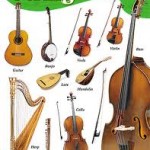There are about twenty Philippine trees’ species suitable as raw materials for the production of stringed musical instruments. According to the Forest Products Research and Development Institute (FPRDI), a good number of Philippine wood species have been tested and found potentially and highly suitable for the manufacture of stringed instruments.
From the almaciga to the lanutan tree, from anabiong to santol, all these have the desired characteristics suitable for the manufacture of the belly of the violins, guitars and as piano sounding board.
Almaciga, lanutan, anabiong and santol, have from moderate to very fine straight grain wood texture which are desirable in stringed instrument making.
Other suitable species are, namely: Almon, antipolo, gubas, igem, kaatoan bangkal, kalantas, lamio, lanete, malakauayan, mahogany, mayapis, Mollucan sau, nangka, teak and tiaong.
There are twelve trees suitable for making the sides and back of musical instruments, they are: Acacia, antipolo, balu, banaba, bansalangin, bagtikan, Benguet pine, dao, Mindoro pine, narra and nato.
Trees suitable for the necks of instruments include amugis, bakauan, banaba, batulinao, kamagong, tabigi and tindalo.
An examination of the woods traditionally used locally and abroad in the manufacture of stringed musical instruments show some common desirable characteristics. This has been confirmed by observations on the anatomy of wood in relation to violin tone.
Local wood species have also been successfully substituted for European spruce with some degree of success. European spruce, also known as Baltic white wood, Romanian pine or Swiss pine is considered as the best traditional timber used in all stringed instruments.
The common desirable features for piano sounding boards, and the belly of violins, guitars, cellos, etc. are: Long fibers, light weight, straight grain, fine texture, narrow and even spaced growth rings (ten to twenty rings per inch or more), flawless in grade quality, and low shrinkage.
Wood for the sides and back of guitars and other stringed instruments must be highly figured, moderately dense, with fine texture, and good stability.
For the necks of instruments, the wood must have high strength, with fine texture, moderately hard with a straight grain, and with good stability.
For elastic and resonance properties, wood must have, among other things, low damping due to internal friction, high damping due to sound radiation and high sound velocity.
